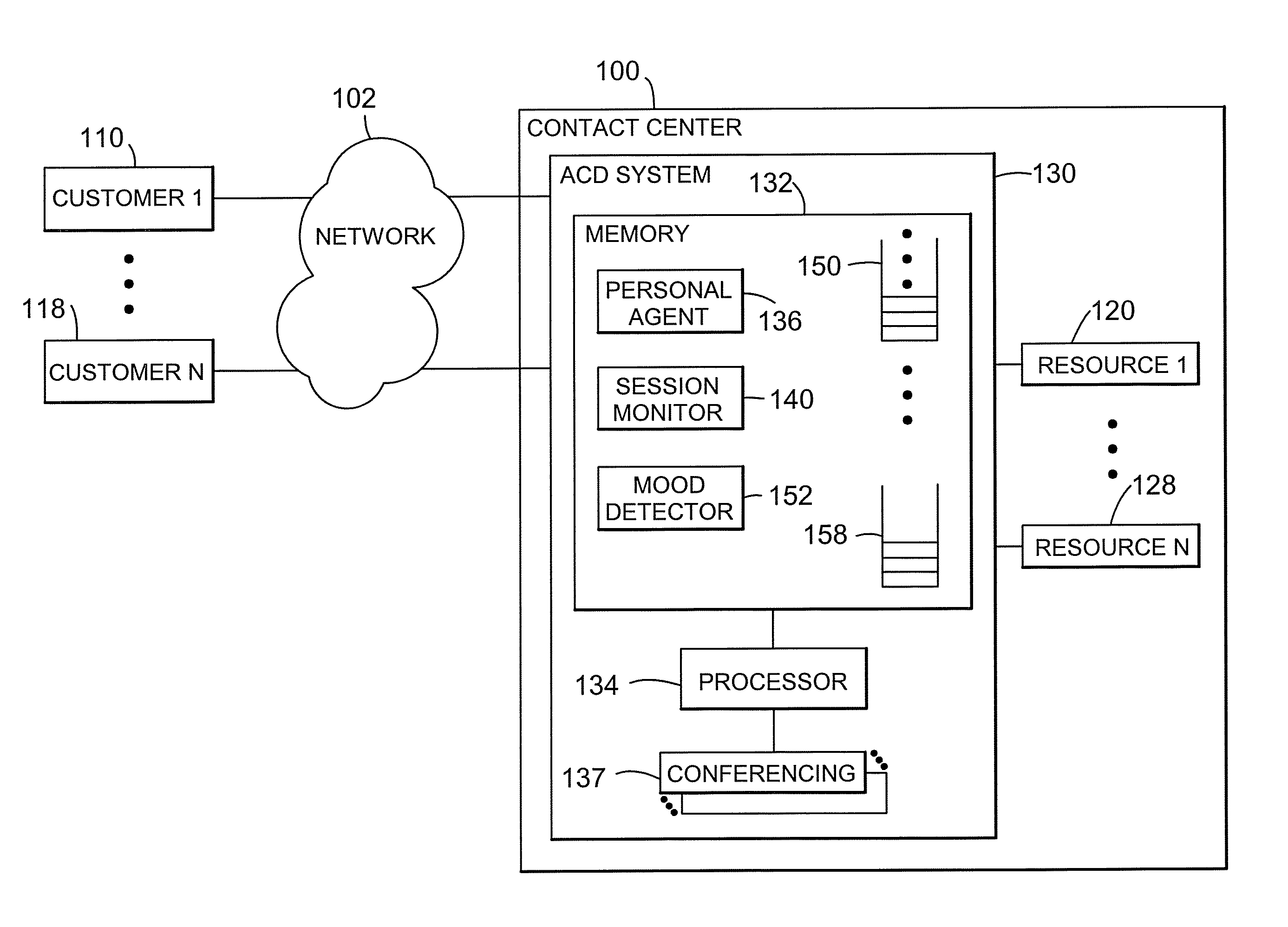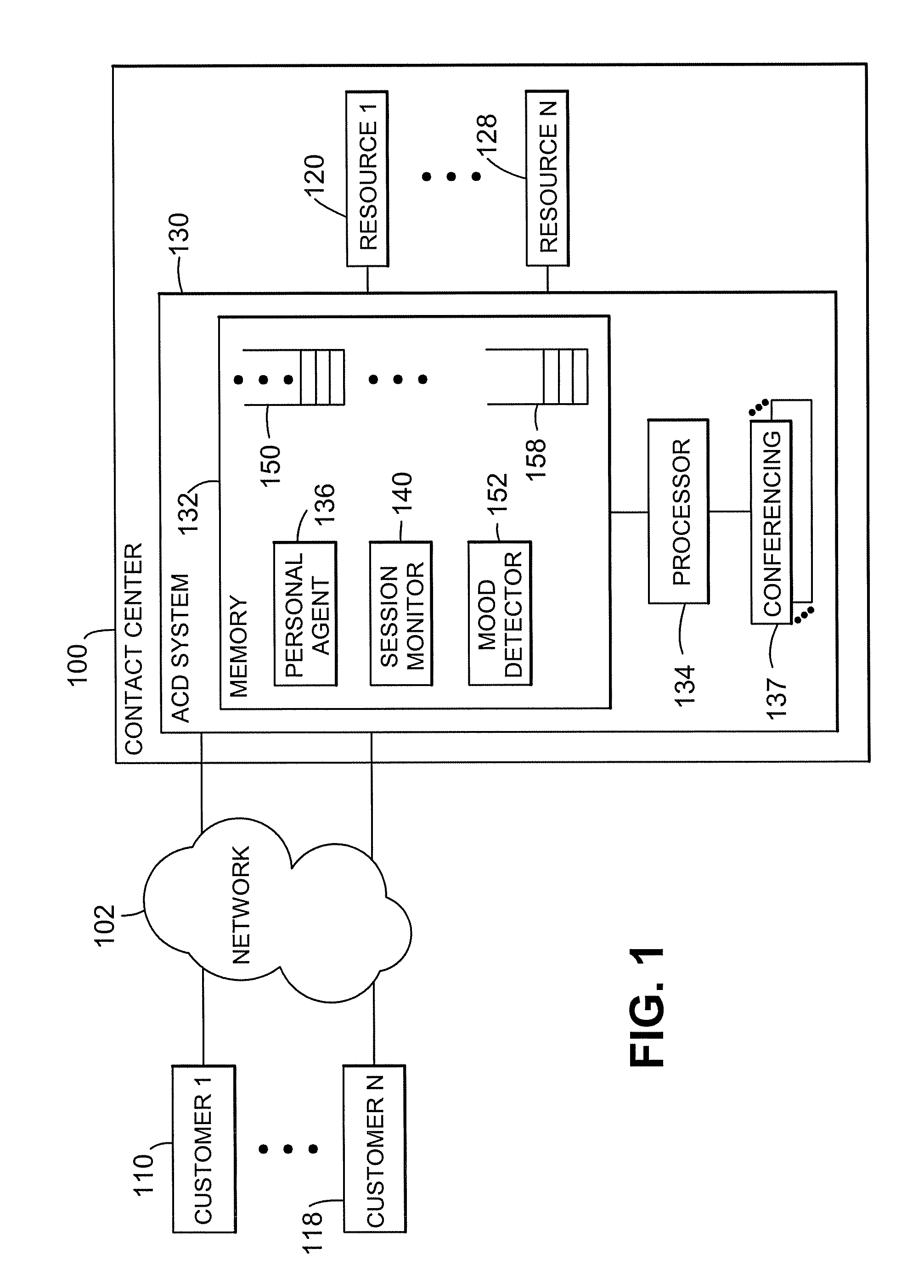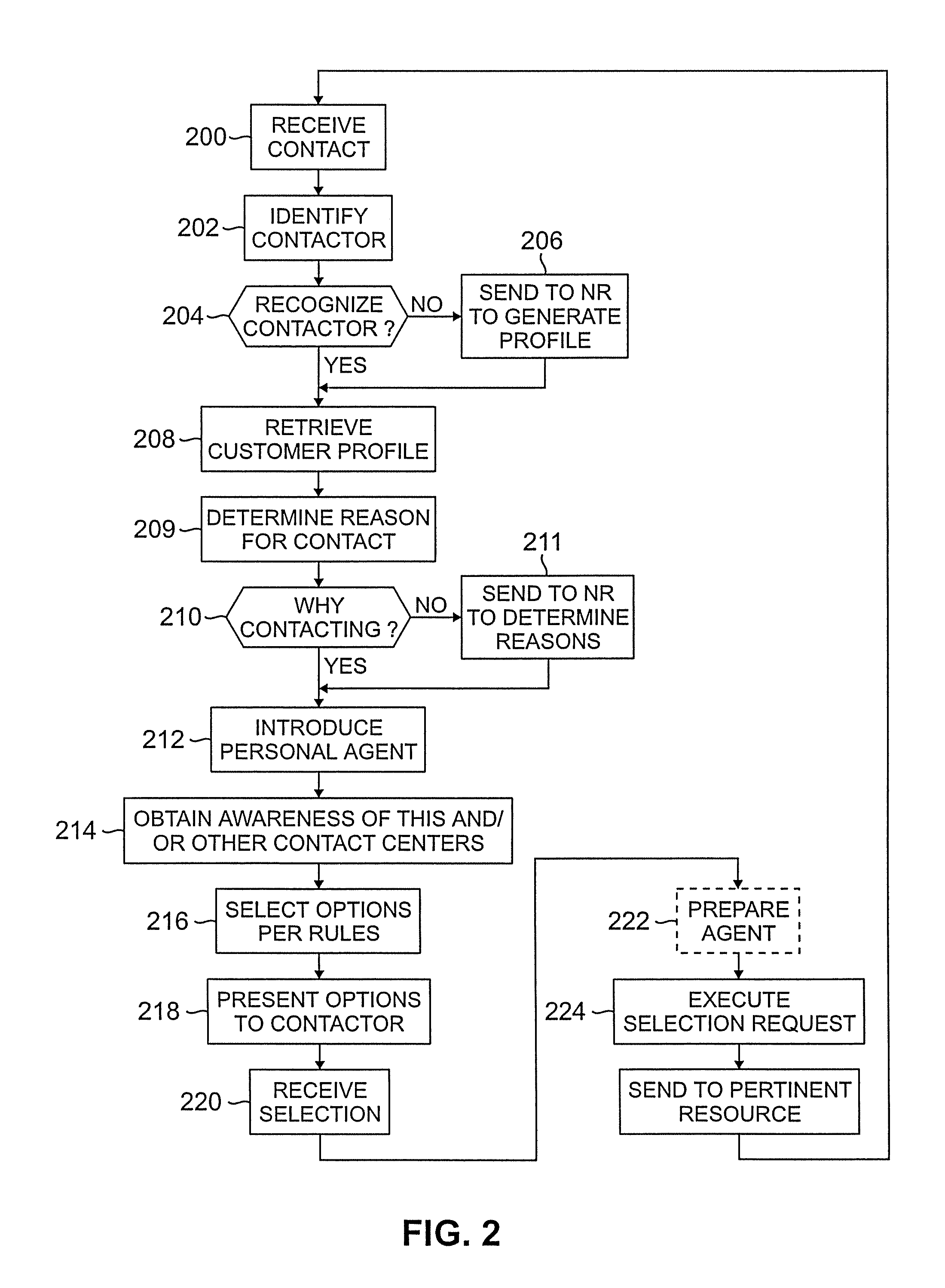Topical dynamic chat
a dynamic chat and topic technology, applied in the field of contact centers, can solve the problems of unsatisfactory service quality, customer resistance to use such systems, and the general cost of providing service via ivr systems is generally substantially lower, so as to reduce the number of redundant resources, reduce operating costs, and effectively use queue time and resources
- Summary
- Abstract
- Description
- Claims
- Application Information
AI Technical Summary
Benefits of technology
Problems solved by technology
Method used
Image
Examples
Embodiment Construction
The Contact Center
[0035]FIG. 1 shows a communication system comprising contact center 100 that is connected with a plurality of customers 1-N 110-118 via a communications network 102. Illustratively, customers 1-N comprise the customers' communication terminals, such as (wired or wireless) telephones, telephony-enabled personal computers, and personal digital assistant or PDAs, Internet appliances with or without voice-enablement, pagers, and network 102 comprises the public telephone network, a data network such as the Internet, or a combination of the foregoing.
[0036]Contact center 100 comprises a plurality of resources 1-N 120-128 for servicing customer contacts, such as human agents, automated agents, IVR ports, and other types of ports, etc., that are connected to network 102 by an ACD (or contact distribution) system 130. Customer communications can be submitted using interactive media formats. Interactive media formats include telephone calls, sending facsimiles, sending E-ma...
PUM
 Login to View More
Login to View More Abstract
Description
Claims
Application Information
 Login to View More
Login to View More - R&D
- Intellectual Property
- Life Sciences
- Materials
- Tech Scout
- Unparalleled Data Quality
- Higher Quality Content
- 60% Fewer Hallucinations
Browse by: Latest US Patents, China's latest patents, Technical Efficacy Thesaurus, Application Domain, Technology Topic, Popular Technical Reports.
© 2025 PatSnap. All rights reserved.Legal|Privacy policy|Modern Slavery Act Transparency Statement|Sitemap|About US| Contact US: help@patsnap.com



